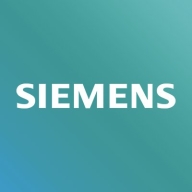

IBM Engineering Lifecycle Management and Polarion ALM are both significant players in the application lifecycle management market. While IBM ELM stands out due to its robust integration capabilities, Polarion ALM is highly valued for its flexibility and feature-rich environment.
Features: IBM ELM offers a comprehensive suite including requirements management, quality management, and change management on a single platform. Polarion ALM is notable for its customizable environment, emphasizing traceability and user adaptability. Both platforms provide extensive lifecycle management support; however, IBM maintains an edge with its seamless integration.
Room for Improvement: IBM ELM could enhance flexibility and user-customizable features. Improvements in user interface intuitiveness would help make Polarion less daunting for new users. Both tools would benefit from stronger, more straightforward reporting capabilities, and more efficient ways to generate documentation.
Ease of Deployment and Customer Service: IBM ELM offers streamlined deployment with extensive support services, suitable for larger enterprises. Polarion ALM provides a flexible deployment model, easily tailored to organizational needs, with strong customization support. IBM's structured deployment process is a key difference between the two.
Pricing and ROI: IBM ELM requires a significant initial investment, focusing on long-term ROI through comprehensive features. Polarion ALM involves upfront costs but is perceived to provide quicker returns because of its adaptability and included feature breadth. Despite IBM's higher initial costs, its extensive integrations may justify the investment for strategic objectives.
| Product | Market Share (%) |
|---|---|
| Polarion ALM | 7.5% |
| IBM Engineering Lifecycle Management (ELM) | 3.9% |
| Other | 88.6% |


| Company Size | Count |
|---|---|
| Small Business | 6 |
| Midsize Enterprise | 4 |
| Large Enterprise | 12 |
| Company Size | Count |
|---|---|
| Small Business | 10 |
| Midsize Enterprise | 3 |
| Large Enterprise | 12 |
IBM Engineering Lifecycle Management stands out for its robust Agile Scrum planning, lifecycle traceability, and tool management, offering cloud-based configurability and strong collaboration features.
IBM Engineering Lifecycle Management provides rich capabilities for Agile project management, facilitating requirements and test management, configuration management, and version control. Its integration with IBM Doors supports comprehensive requirements handling, and the cloud-based platform enhances collaborative efficiency across teams. Despite needing advances in user-friendliness and reporting, ELM's global configuration and compliance features make it invaluable in demanding environments.
What are the key features of IBM Engineering Lifecycle Management?IBM Engineering Lifecycle Management is vital in sectors like automotive and manufacturing, where it implements Agile frameworks to manage requirements, conduct testing, and handle defects. It integrates into development pipelines ensuring live traceability and visibility, supporting critical engineering processes efficiently.
The world’s first 100% browser-based ALM enterprise solution, which enables seamless collaboration across disparate teams, multi-directionally linked work items, full traceability, accelerated productivity and automated proof of compliance.
We monitor all Application Lifecycle Management (ALM) Suites reviews to prevent fraudulent reviews and keep review quality high. We do not post reviews by company employees or direct competitors. We validate each review for authenticity via cross-reference with LinkedIn, and personal follow-up with the reviewer when necessary.